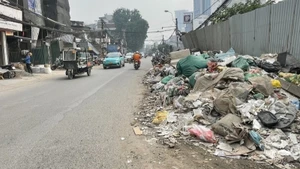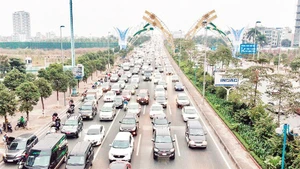Motorbikes – among the “culprits” contributing to CO₂ emissions and environmental pollution (Photo: The Anh).
According to the Ho Chi Minh City Department of Construction, under Decision No. 2530, together with Ha Noi, 100% of public transport vehicles in Ho Chi Minh City must use clean, green, and environmentally friendly energy by 2030.
The plan specifies that by 2030, ambient air quality nationwide must be gradually monitored and improved. In Ho Chi Minh City and other urban areas across the country, the VN_AQI index (the proportion of days in a year with recorded air quality data) must achieve year-on-year improvement.
Under the roadmap, 100% of road vehicles (including cars, motorcycles, and mopeds) will be subject to emissions management and control in accordance with the relevant national standards and technical regulations. At the same time, localities must issue and implement incentive policies supporting the conversion of goods transport and passenger transport services using app-based platforms (shippers) to clean, green, and environmentally friendly energy sources.
In addition, urban transport infrastructure must be synchronously upgraded to accommodate an increasing proportion of green and public transport, while public transport fleets must be invested in, upgraded, and converted to clean and green energy.
In terms of emissions management from transport activities, the plan calls for strengthening public transport systems and promoting a shift towards green, environmentally friendly mobility. In particular, “low-emission zones” will be established and implemented in Ha Noi and Ho Chi Minh City. It also requires building a system of facilities capable of conducting vehicle emissions testing and organising inspections with data connectivity to support emissions inventories.
At the same time, incentive policies will be developed to support residents and businesses in replacing old motorcycles and mopeds with clean, green, and environmentally friendly vehicles.
Ho Chi Minh City has already prepared a scheme demonstrating its determination to transition to environmentally friendly public transport and achieve Net Zero by 2050. From 2025, 100% of public transport buses must be replaced or newly invested. From 2030 onwards, all operating buses must be electric. According to calculations, if the transition roadmap is carried out over the next five years, the city will have nearly 3,200 electric or green-energy buses, with the total projected investment cost estimated at around 13.511 trillion VND.
The Ho Chi Minh City Public Transport Management Centre stated that, given the transition roadmap and projected bus fleet size by 2030, the city will require at least 42 charging stations with 317 charging pillars to meet operational needs. Therefore, Ho Chi Minh City needs strong policies to encourage investors to participate in developing charging infrastructure and to provide interest-rate support for loans used to build charging stations.
















